Museums cost a lot of money, because they require qualified personnel, constant maintenance of the spaces, conservation and restoration of the artifacts, microclimatic control of the exhibition halls and repository, security systems, and so on. However, a museum (or an archaeological site) must be financed by the community because only in this way can it carry out its “public service” of education, study and enjoyment (1) in a complete way and without external influences. On the other hand, the fact that a museum is “financed by the community” is also a litmus paper of the degree of civilization of a Country and its political maturity.
If the museum were to self-finance like any private company, that is, trying to be more and more appreciated by its customers/visitors, it would be forced to perform only (or above all) those activities of sure success for its visitors. But the orientation of the museum towards the visitors, if based on the satisfaction of their needs as they result from the analysis of customer satisfaction, would reduce its capacity for experimentation and innovation. Egyptian antiquities, the Impressionists and dinosaurs are themes of sure success, but the more exhibitions on these subjects are displayed, the more their contents tend to repeat themselves. So even if these exhibitions bring more public to the museum, that audience from that museum does not draw significant cultural content. (2) Therefore, the museum must be funded by the community.
The Great Paradox:
This institution has been called the “museum/rentier” because it lives on public funding, like the landowner who does not work, but merely manages his own income. The “museum-rentier”, being able to count on financial sources not directly related to the cultural activities carried out, lives – most of the time – a life coldly detached from the demand expressed by citizens, responding exclusively to those who provide the flow of public funding, the Public Administration. The museum does not need to find sources of support by implementing a strategy of relationships “services offered/financing” with the different components of society (citizens, tourists, foundations and non-profit institutions, commercial operators, companies, business associations, public and private bodies, local authorities, etc.). So here is the paradox that the public functioning of the museum – which is born and justified to favour the use of the public service/museum by all citizens – risks distancing from them rather than drawing them in. (3)
BIBLIOGRAPHY:
(1) ICOM (International Council of Museums) defines the museum as follows:
It is an organization that was created in 1946 by and for museum professionals. A museum is a non-profit, permanent institution in the service of society and its development, open to the public, which acquires, conserves, researches, communicates and exhibits the tangible and intangible heritage of humanity and its environment for the purposes of education, study and enjoyment.
2) Maria Vittoria Marini Clarelli, Il Museo nel mondo contemporaneo, Carocci Editore, 2014, pag. 82
3) ibid. pp. 53-54





Leave a Reply
Want to join the discussion?Feel free to contribute!